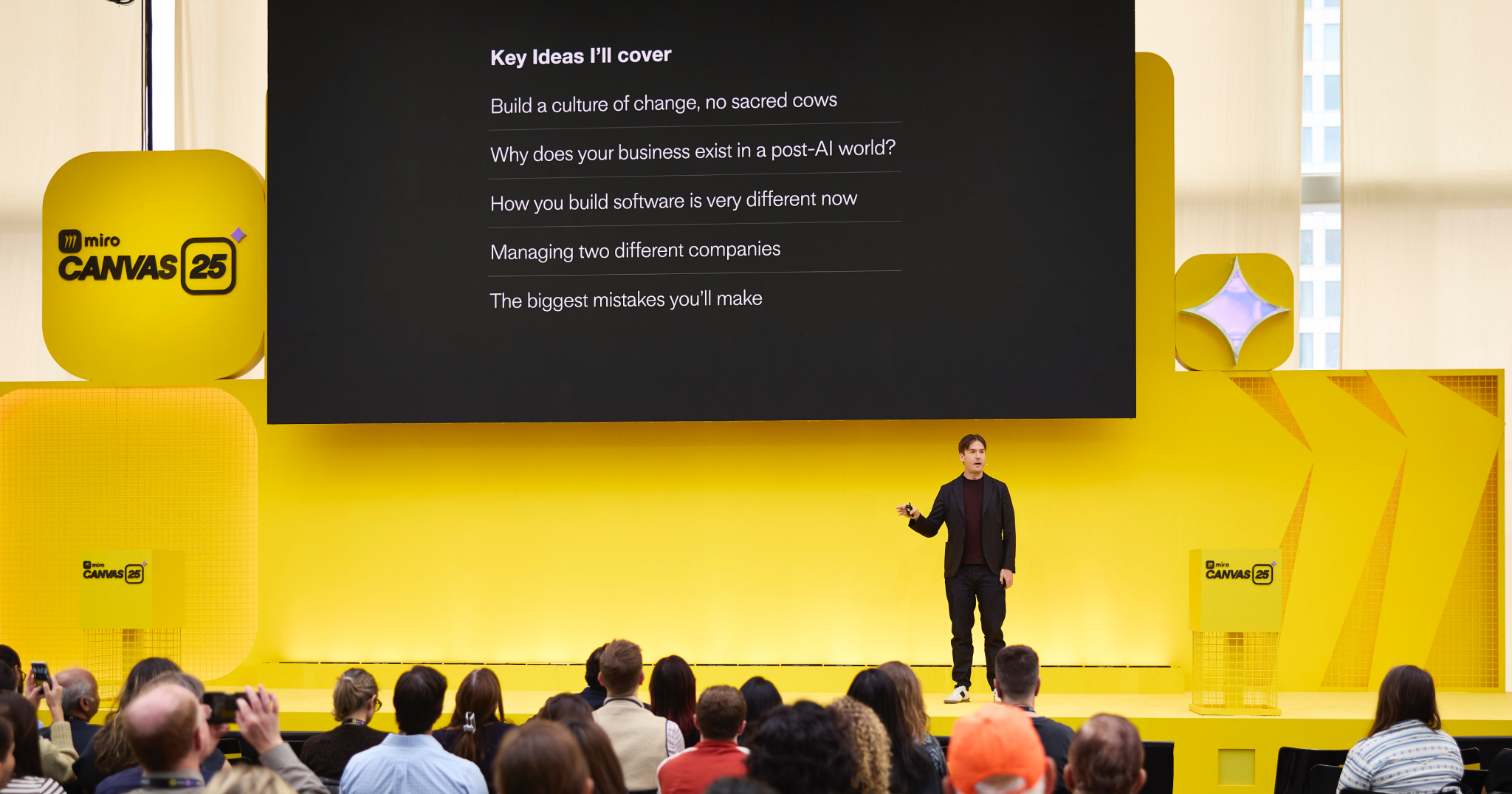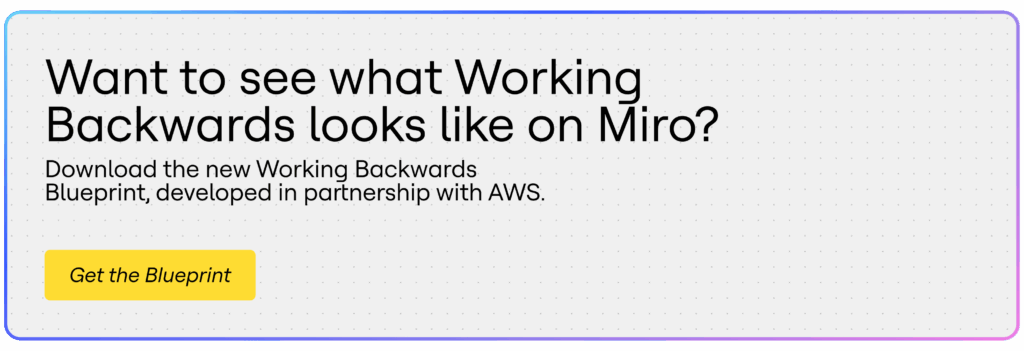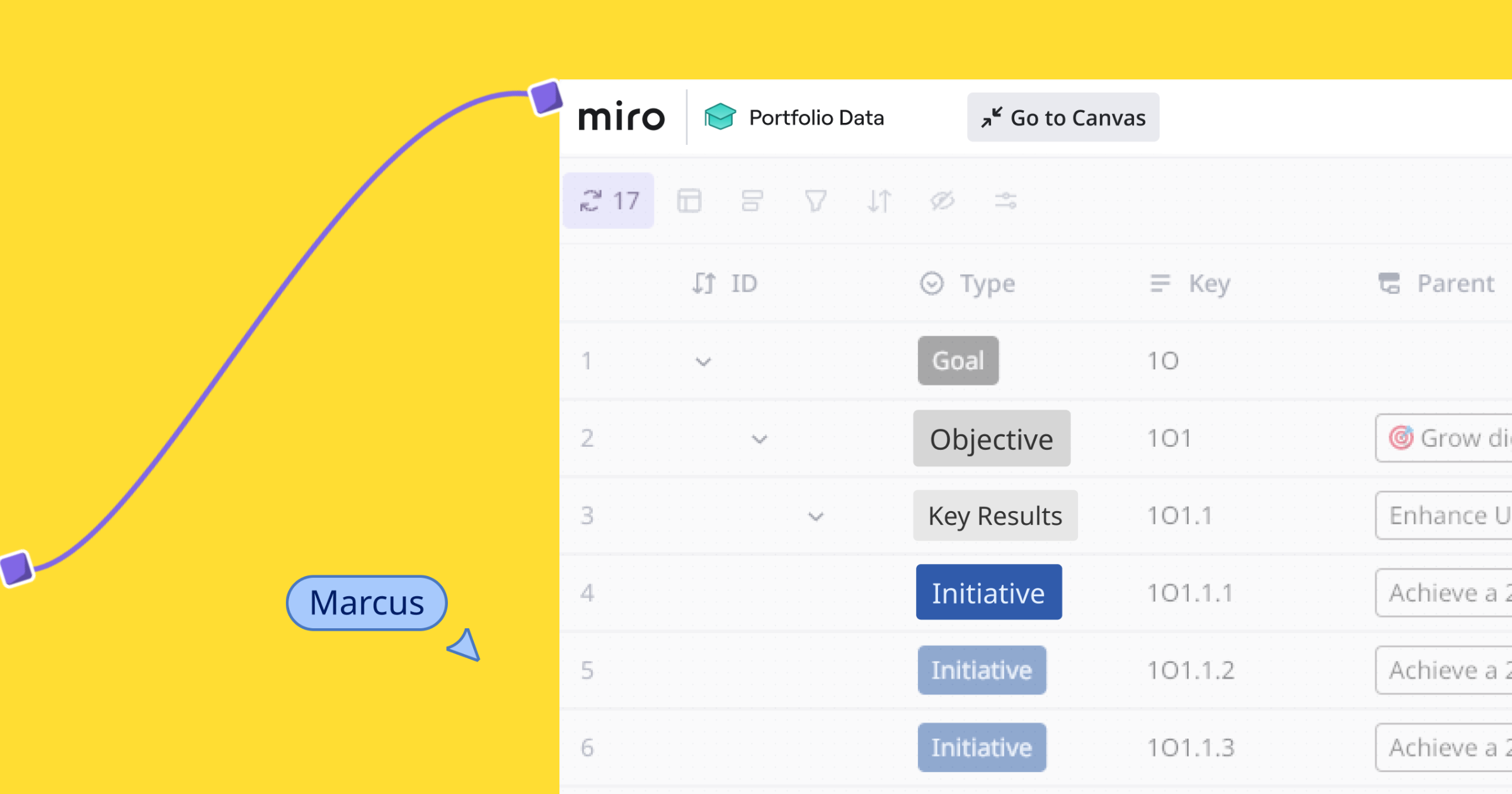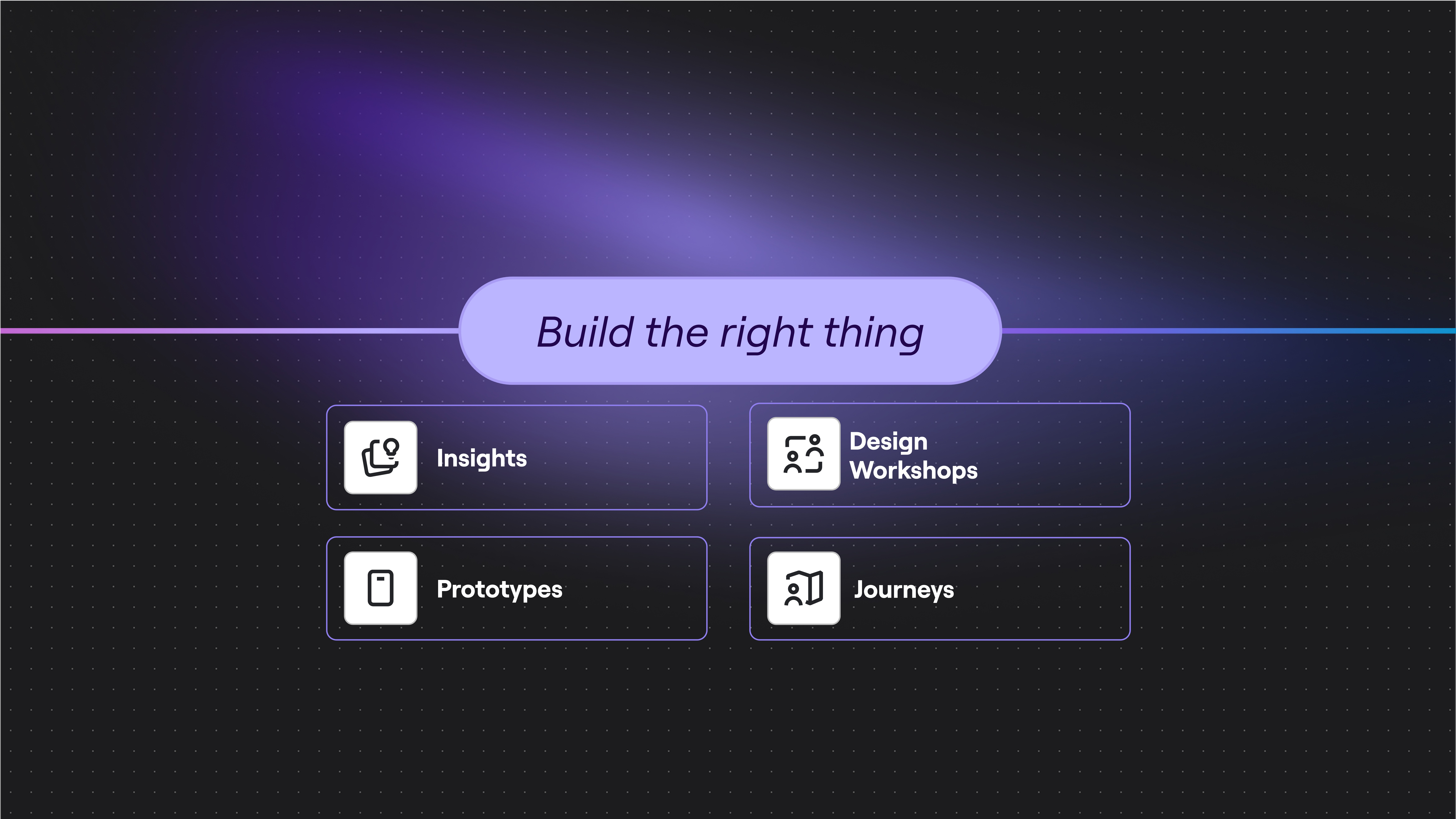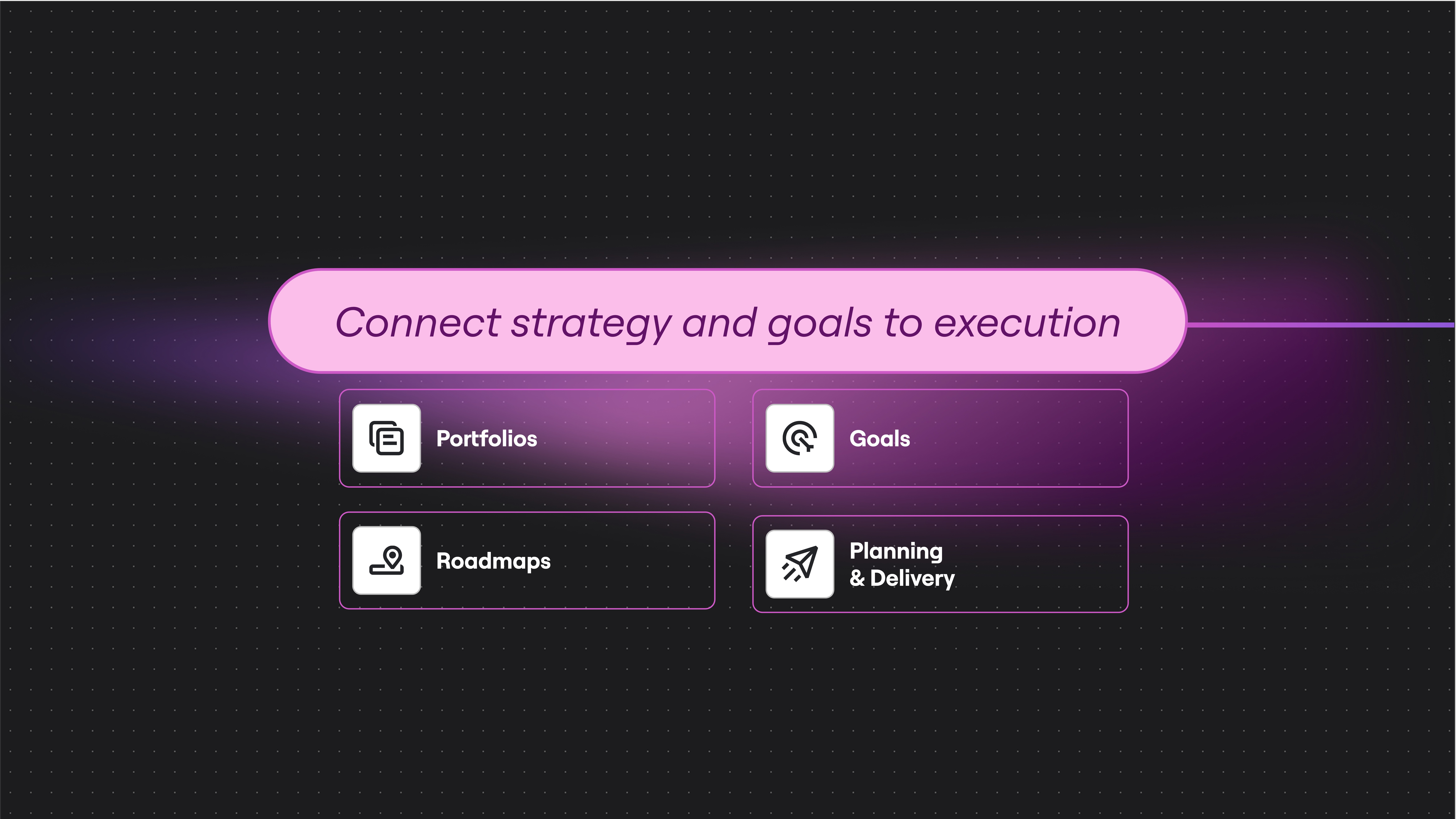We’ve already revealed the top product takeaways for IT leaders from Canvas 25. But that’s barely scratching the surface of all the great insights we heard.
Leaders from GitHub, Intercom, Red Hat, AWS, and more joined us on stage to share real stories of AI transformation — their ups and downs, mistakes made, and lessons learned. These are the three big themes we took from their sessions.
Start with your customer, not the technology
Customer obsession has long been key to successful innovation, but somehow in the scramble to adopt AI it’s at risk of being overlooked. That really hit home for GitHub when they were thinking about how to scale the company’s use of AI beyond a simple Copilot integration.
As Andrew Bauer, Group Product Manager for Internal Tools, put it: “The sentiment of, ‘Hey, we should do AI’ isn’t bad, but the risk is that we’re leading with AI instead of solving a problem. What happens then is that you send out a solution that’s so disconnected from what people actually need that they don’t see any value in it.”
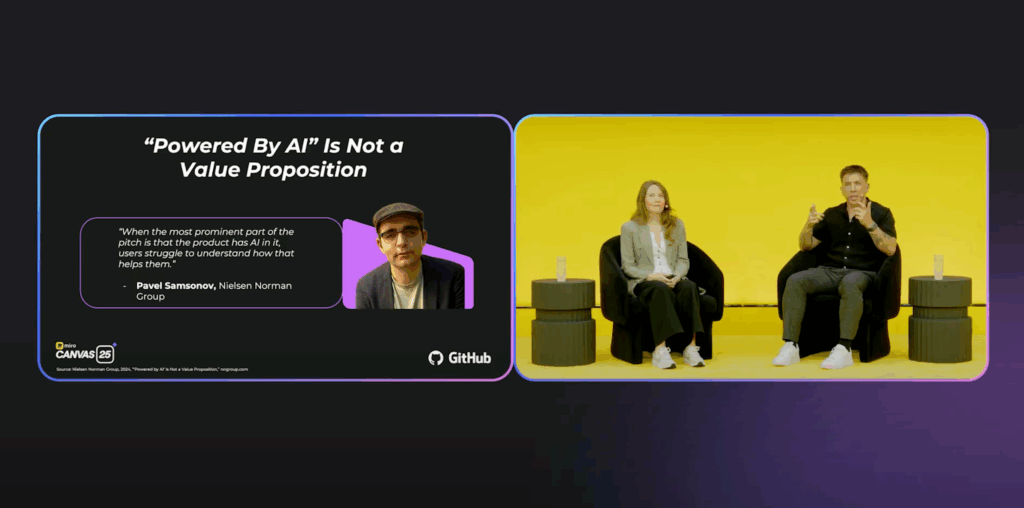
Bauer quoted a recent article that put it even more simply: “‘Powered by AI’ is not a value proposition.” GitHub’s solution? Start by listening — “just understanding what the sentiment is internally towards AI and how people are using it.”
Taking a beat to get your AI strategy right might sound like strange advice given how fast the technology is moving. But as Bauer says, “The hype train always seems to be leaving the station. We’re always late and it never provides the value we need. But user value is like a taxi — it’s always ready when you are.”
Eduardo Ordax, Principal Go-to-Market for Generative AI at AWS, also explored this idea that customer-centricity is more important than AI-centricity. He called the focus on being AI-first “a big mistake,” adding, “It’s fine to use AI, but you need to be customer-first. Most of the companies I talk to today are paying too much attention to AI and not actually listening to their customers.”
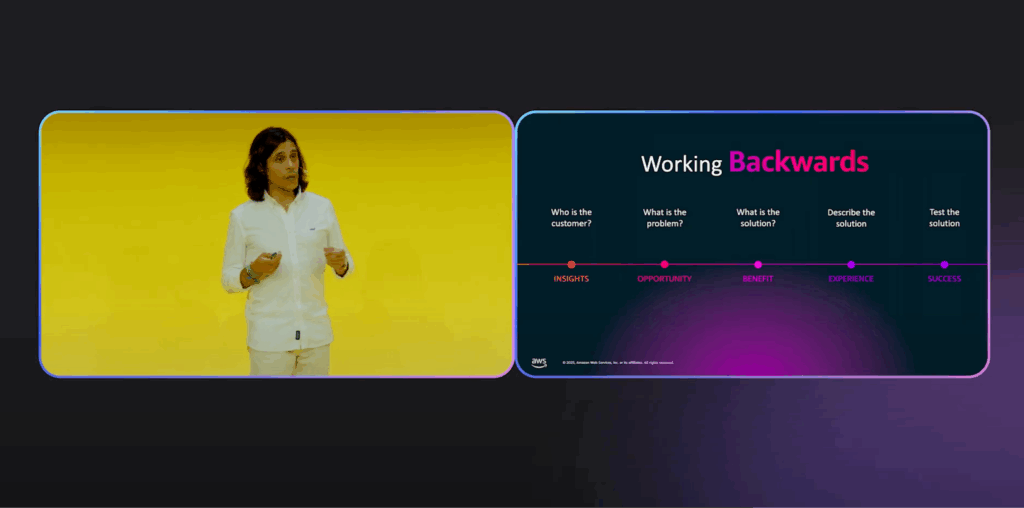
Amazon has an entire methodology designed to figure out what customers want and then work backwards to what they should build. Being a company that likes to keep things simple, it’s called the “Working Backwards” approach.
“You start by understanding the customer,” Eduardo explained. “Once we know the customer we can figure out the problem, and then jump into the solution, which might be AI but often it’s not.”
Don’t compromise on culture change
For a moment, Intercom Co-founder Des Traynor felt like he’d won at SaaS. His company had raced from zero to $50M ARR in less than three years. Every chart went up and to the right. “We thought we were geniuses,” he joked — until he tried ChatGPT.
“I asked, ‘How do I install Intercom on iOS?’ Two seconds later I got a perfect answer. Very quickly I realized that the future of this industry is not what I thought it was going to be and we were going to die unless we worked out a plan to survive.”
Twelve weeks after that first query, Intercom launched Fin, the first LLM-powered customer support agent. It now does a million resolutions every week. But the biggest challenge wasn’t anything technical — it was changing Intercom’s culture.
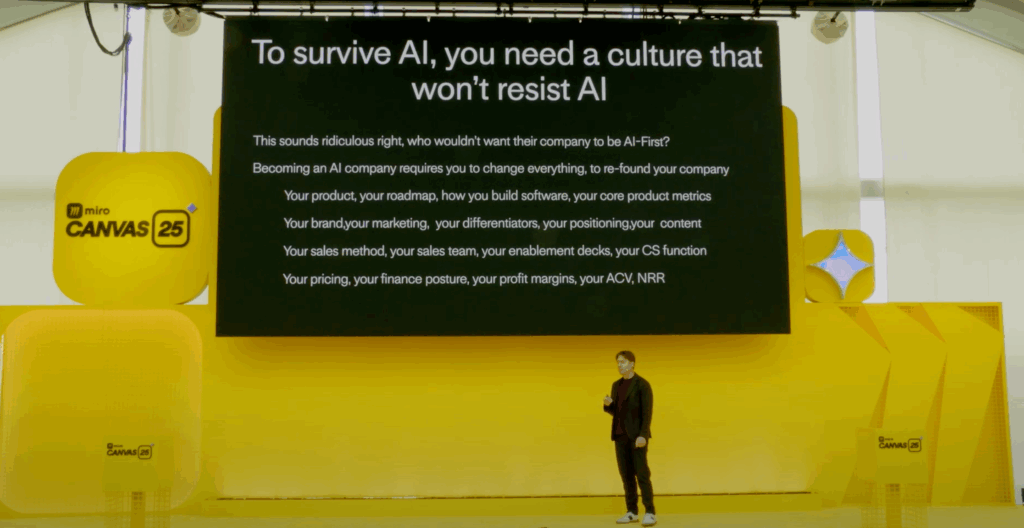
“Culture change” is one of those amorphous terms that can end up meaning nothing at all. At Intercom, it was the opposite. “You have to be willing to change everything,” Des explained. “Everything has to be on the table — and not in some willing, open-minded way. You have to be determined to change.”
Intercom’s culture change was radical, relentless, and uncompromising. “It wasn’t a choice or a negotiation,” said Des. “I had two pitches. One was fear-based — we’re probably going to die and new competitors will kill us. The other was ambition — if we can pull this off we’ll be a $30B company and you’ll be on the front page of Forbes. It was really important that people responded to one of those things and went all in.”
The lesson for the rest of us? Set an incredibly high bar for AI transformation. Don’t stop just because a few teams are using Claude on a regular basis. As Des put it: “Ask yourself, ‘What would a brand new startup unburdened by any of your legacy attitudes do today?’ That’s the actual thing you’re fighting. This has to be absolute. You have to be willing to delete and disavow every process that is not part of your future.”
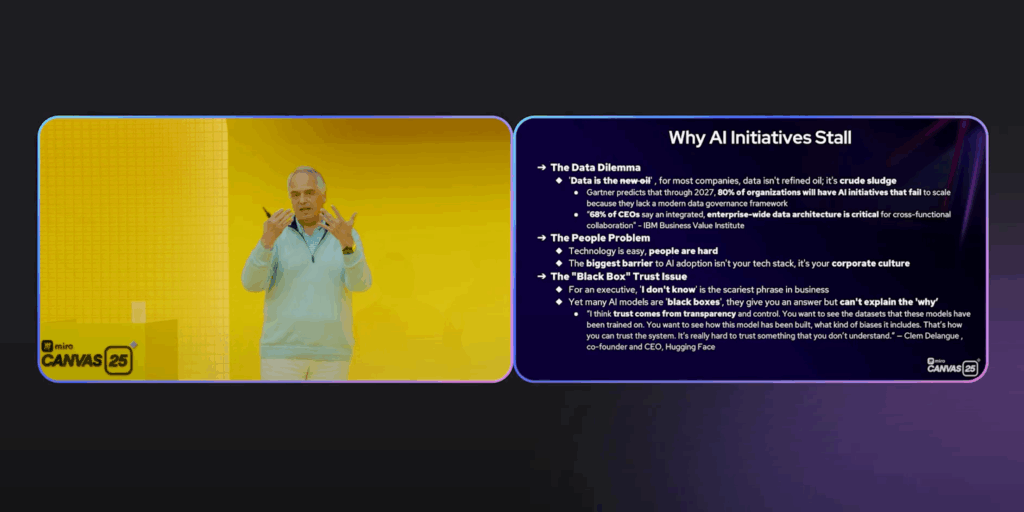
Jan Mark Holzer, Senior Distinguished Engineer at Red Hat, echoed the sentiment in his own session. “The technology is easy,” he said. “The people are hard. You need to make sure you bring them along and empower them.”
That might be easy enough for engineers where the impact of AI coding tools is obvious. But it’s important not to overlook people in roles where the AI use cases are less obvious. “There’s a real danger that some people think they’re not part of the cool crowd that gets to use AI tools,” said Jan Mark. “Encourage them to look at their opportunities and apply AI even to things they haven’t thought about.”
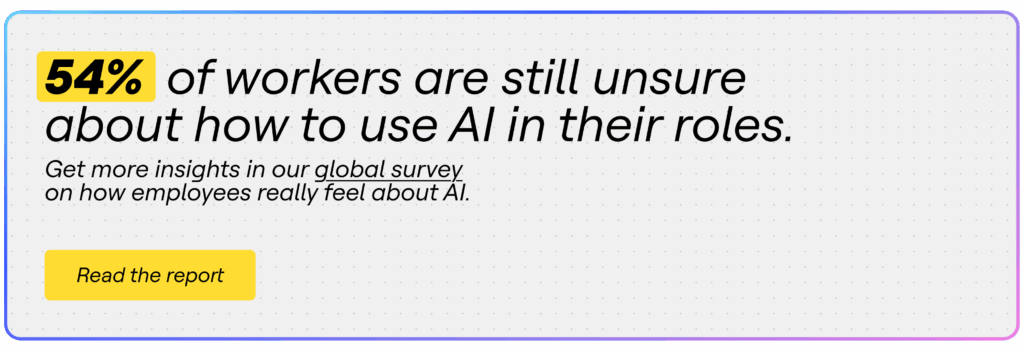
Data makes the difference for AI success
“Data is fundamental and foundational,” Jan Mark Holzer told us. He wasn’t the only one who came back to the subject time and again, but he was almost certainly the most enthusiastic (“I could talk about it all day,” he promised).
The danger, he noted, is that LLMs won’t tell you when your data is bad. They’ll just give it a polish and pretend it’s okay. Or worse, they’ll invent completely fictitious data to fill in the gaps. Eduardo Ordax was even more to the point: “Garbage in, garbage out.”
You can’t fix your data overnight, which is why Eduardo also noted that companies in industries with a strong track record of data strategy and investment — financial services and healthcare for instance — are so well positioned to succeed with AI. But there are steps you can start to take.
Jan Mark Holzer shared Red Hat’s approach to data architecture, which includes creating a central data layer with governance and quality standards; eliminating inconsistent data sources; providing unified definitions and labels; enforcing standards; and simplifying the sprawl of dashboards, spreadsheets and pipelines.
Be the partner your CEO needs
Ultimately, what we learned at Canvas 25 was that a lot of the demand for AI right now is unfocused. CEOs know that they want it, they just don’t necessarily know what they want it for.
The role of the IT leader over the coming months is to be the strategic partner your CEO needs. Not just reacting but assessing, evaluating, and prioritizing so that what you’re bringing to the table isn’t a new tool but measurable business value.
Want to know where to start? Miro is built for AI transformation. It gives leaders a single place to collaborate with the rest of the business for faster alignment and flawless execution. At Canvas 25, we launched the AI Innovation Workspace, with new AI agents, workflows, and canvas-as-the-prompt technology to help you brainstorm, plan, and deliver this transformation faster than ever.

